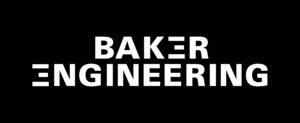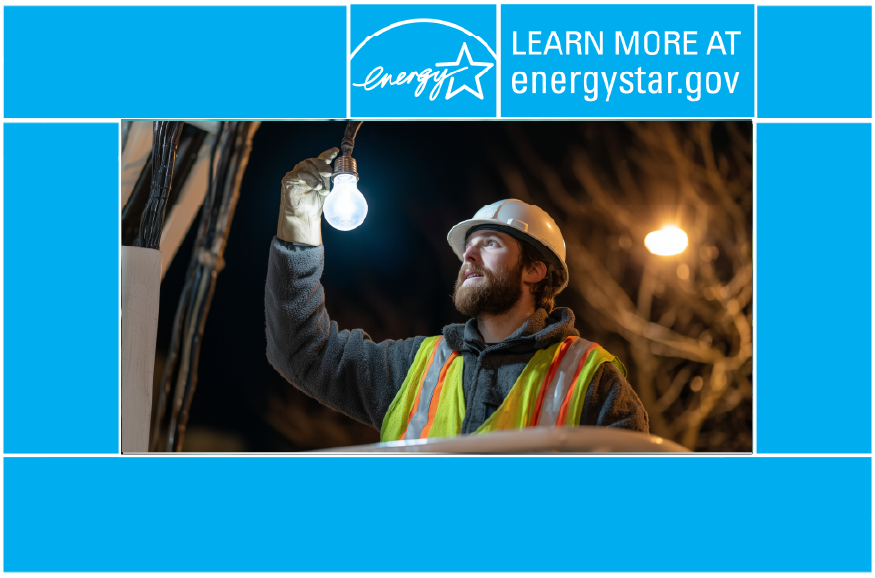The ENERGY STAR Playbook: Which Retrofits Move Your Score
Retrofits aren’t created equal. Some deliver quick wins with fast payback. Others require major capital but barely move the score. When you’re working with limited budgets and competing priorities, choosing wrong sets you back years.
ENERGY STAR scores are based on measured energy consumption. The EPA doesn’t award points for having LED lights or an efficient chiller. Technology only affects your score when it lowers your energy use intensity. The retrofit that sounds impressive might not perform as well as something simpler and cheaper.
Understanding the Playing Field
Your score compares your building’s actual source Energy Use Intensity (EUI) against predicted source EUI for similar buildings nationwide, adjusted for climate, operating hours, and occupancy. The lower your actual energy use relative to the prediction, the higher your score.
A building scoring 45 has tremendous upside. Modest improvements can drive major score gains. A building at 70 faces diminishing returns. Each additional point requires more effort. ENERGY STAR periodically updates its baseline data. When the comparison pool gets more efficient, your score can drop even if your consumption stays flat.
Research from UCLA analyzing 129 commercial building retrofit projects found that decision makers consistently target payback within three to five years. Given that constraint, here’s which improvements actually deliver.
Lighting Retrofits: The Quick Wins
Lighting retrofits cost approximately $5 per square foot on average with payback of 6-18 months to 2 years. Research shows lighting retrofits yield around 45% ROI in two years, with first-year savings of approximately $200,000 for large buildings. LEDs reduce lighting energy use by 60-80% compared to older technology.
If your building still has T12 fluorescent fixtures, incandescent, or older fluorescent technology, LED retrofits offer the fastest path to score improvement. But lighting retrofits aren’t just about swapping bulbs. The real impact comes from combining LEDs with controls like occupancy sensors, daylight harvesting, and programmable schedules.
Ernst & Young’s New York headquarters reduced upfront costs for its LED retrofit by more than 13% through utility rebates and projects annual savings of nearly $1 million, cutting energy and maintenance costs by up to 50%. Marriott International’s headquarters lighting retrofit reduced energy use by 860,000 kWh per year, a 66% reduction, with an ROI of slightly over two years after accounting for $130,000 in utility rebates and tax savings.
Start with areas that run around the clock like parking garages, corridors, and stairwells where hours of operation amplify savings. Then target high-usage spaces like open offices and warehouses. Occupancy sensors work best in conference rooms, restrooms, and storage areas where lights get left on unnecessarily.
LED upgrades also reduce HVAC load because LEDs produce far less heat than older technologies. For every 1 watt reduction in lighting, you get approximately 0.32 watts reduction in cooling load. This secondary benefit doesn’t directly show up in ENERGY STAR scores, which measure total energy, but it improves overall building performance.
HVAC Optimization
HVAC represents 40% or more of commercial building energy use, which means optimization delivers outsized impact on ENERGY STAR scores. Costs vary widely. Controls and tuning are relatively affordable while equipment replacement is expensive. Payback averages approximately 5 years, with energy reductions of 25-35% possible for HVAC energy use.
The Pacific Northwest National Laboratory found that large commercial buildings could cut HVAC costs by 25-35% by adding certain retrofits to existing rooftop units. These aren’t full replacements but strategic upgrades to existing systems.
Variable frequency drives on air-handling units, pumps, and fans adjust motor speed based on demand rather than running at full capacity continuously. VFDs can reduce motor energy use by up to 50% and typically offer faster payback than equipment replacement. Building automation system upgrades improve scheduling and control. Many buildings run HVAC systems on outdated schedules that don’t match actual occupancy. A modern BAS with occupancy-based controls, optimized start and stop times, and demand-controlled ventilation can dramatically reduce runtime without sacrificing comfort. Smart thermostats and zone controls prevent overcooling or overheating of spaces. Research shows that overheating or overcooling empty spaces ranks among the biggest sources of energy waste.
When systems reach end of life, high-efficiency replacements deliver better long-term performance. Modern chillers, boilers, and rooftop units operate far more efficiently than equipment installed 15-20 years ago. However, payback periods extend to 5-7 years or longer depending on equipment costs and energy savings achieved. Energy recovery ventilators capture heat from exhaust air and use it to pre-condition incoming fresh air, reducing heating and cooling loads. This makes particular sense in buildings with high ventilation requirements like laboratories or healthcare facilities.
Start with the basics. Ensure your existing systems are properly maintained and controlled. Many buildings achieve 10-15% energy reductions through retro-commissioning, which means tuning existing systems to operate as designed. This typically costs far less than equipment replacement and delivers quick payback. Then layer on VFDs, BAS upgrades, and controls before considering equipment replacement.
Building Envelope: The Hidden Opportunity
Building envelope improvements like insulation, windows, and air sealing represent generally the most expensive retrofit category. Payback varies significantly. Window film delivers 2-3 years while full window replacement requires 6 or more years. Energy reductions of 20-30% in heating and cooling loads are possible, reducing both heating and cooling energy.
Building envelope improvements don’t directly appear on ENERGY STAR score calculations the way lighting and HVAC do. But they reduce thermal loads, which means HVAC systems run less frequently and use less energy. That shows up in your EUI.
Window film offers one of the faster paybacks in envelope upgrades. Commercial window film delivers typical payback of three years or less, with some climates seeing payback in under two years. ConSol estimates that ROI for window film ranges from 6-68% annually depending on climate zone and film type. Full window replacement costs more but delivers better long-term performance. Older buildings with single-pane or inefficient double-pane windows lose tremendous amounts of energy through thermal transmission. Modern high-performance windows with low-E coatings and improved framing can cut heat loss and gain significantly. However, costs run high and payback often extends beyond 6 years.
Air sealing represents the lowest-cost envelope improvement. Caulking gaps, weatherstripping doors, and sealing ductwork address a problem that can account for up to 30% of a building’s energy loss. Addressing air leaks requires relatively modest investment and delivers ongoing savings. Insulation upgrades make sense when conducting major renovations. Adding insulation to walls, roofs, and exposed pipes reduces heat loss and improves system efficiency. Uninsulated hot water and HVAC pipes can lose up to 80% of their heat output.
Unless you’re planning major facade work, start with window film and air sealing. These deliver the best cost-benefit ratio for envelope improvements. Schedule full window replacement for planned renovations when you can amortize costs across broader capital projects. In hot climates, focus on reducing solar heat gain through windows and roofs. In cold climates, prioritize insulation and air sealing to reduce heating loads.
Controls and Automation
Controls cost $30-130 per sensor with full BAS upgrades varying by building size. Payback often comes in under 2 years, with energy reductions of 10-20% when properly deployed. Controls optimize existing systems without replacement.
Controls represent the highest-leverage retrofit category. They don’t replace equipment but make existing equipment run smarter. Occupancy sensors, programmable thermostats, demand-controlled ventilation, and integrated building management systems can deliver 10-20% energy reductions without touching mechanical equipment.
Occupancy sensors for lighting cost $30-130 each and pay for themselves within months in frequently unused spaces. Motion sensors prevent lights from running unnecessarily in conference rooms, restrooms, storage areas, and after hours in offices. Smart HVAC controls learn usage patterns and adjust heating and cooling proactively rather than reactively. Buildings using smart data tools can cut energy use by 10-20% according to the U.S. Department of Energy. DeepMind demonstrated 40% reductions in data center cooling energy through AI-powered controls. Similar principles apply to commercial buildings at smaller scale. Demand-controlled ventilation uses CO2 sensors to modulate fresh air intake based on actual occupancy rather than running at design capacity continuously. This reduces the energy required to condition outdoor air.
Deploy controls alongside other retrofits to amplify their impact. LED lighting combined with occupancy sensors delivers better results than LEDs alone. HVAC upgrades paired with smart controls optimize system performance. Start with areas offering the clearest ROI, specifically spaces with variable occupancy and high energy use. Then expand to portfolio-wide deployments as results demonstrate value.
Making the Investment Decision
When evaluating which retrofits to pursue, consider current score and target. Buildings scoring below 50 have more improvement headroom. Modest investments can drive significant score gains. Buildings already at 65-70 face diminishing returns. Each additional point costs more.
Equipment age and condition matters. Don’t replace functioning equipment prematurely just to chase score improvements. But when systems approach end of life, choose high-efficiency replacements that deliver long-term performance.
Utility rates and incentives affect the calculation. Higher energy costs accelerate payback. Markets with expensive electricity see faster ROI on lighting and cooling-focused upgrades. Generous utility rebates can cover 30-70% of project costs, dramatically improving economics.
Compliance requirements change the math. Cities with building performance standards and penalties make avoiding fines part of the ROI equation. New York’s Local Law 97, for example, imposes substantial penalties for exceeding emissions limits.
Tenant expectations factor in as well. Sophisticated tenants with sustainability commitments may pay premiums for high-performing space. Factor potential rent increases and improved retention into your analysis.
The Bottom Line
The most effective ENERGY STAR improvement strategy isn’t always the most expensive one. Start with lighting for quick wins and fast payback. Layer on controls to optimize existing systems. Address HVAC through tuning and targeted upgrades before wholesale replacement. Consider envelope improvements strategically, focusing on cost-effective measures like window film and air sealing.
Track your progress through Portfolio Manager. Benchmark regularly to see how improvements translate to score gains. Buildings that maintain focus on energy performance year after year compound their advantages through continuous optimization. The properties achieving ENERGY STAR certification aren’t necessarily the ones spending the most on retrofits. They’re the ones making smart investments that move the needle on measured energy consumption.
References
- Action Services Group. “Commercial Building Retrofits For Sustainability.” February 11, 2025. https://actionservicesgroup.com/blog/commercial-building-retrofits-for-sustainability/
- “Comparing Retrofits: Lighting, HVAC, Windows.” Buildings. https://www.buildings.com/industry-news/article/10189118/comparing-retrofits-lighting-hvac-windows
- “ENERGY STAR Score Technical Reference.” U.S. Environmental Protection Agency. April 2021. https://portfoliomanager.energystar.gov/pdf/reference/ENERGY%20STAR%20Score.pdf
- FSG Electric & Lighting. “Commercial Building Retrofits Deliver Transformation and Sustainability.” June 21, 2024. https://fsg.com/commercial-building-retrofits-sustainability/
- “Retrofitting Commercial Real Estate: Current Trends and Challenges in Increasing Building Energy Efficiency.” UCLA Institute of the Environment and Sustainability. October 14, 2016. https://www.ioes.ucla.edu/project/retrofitting-commercial-real-estate-current-trends-and-challenges-in-increasing-building-energy-efficiency/
- “What Is an Energy Efficiency Retrofit?” Redaptive Solutions. September 5, 2025. https://redaptive.com/what-is-an-energy-efficiency-retrofit/
Thank you to our ENERGY STAR Month sponsor Baker Engineering.

To stay up to date on news and resources such as this and other topics of importance to the real estate industry, subscribe to the free CRE Insight Journal Newsletter using this link.
Comments are closed.









